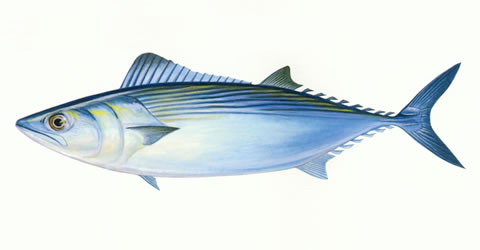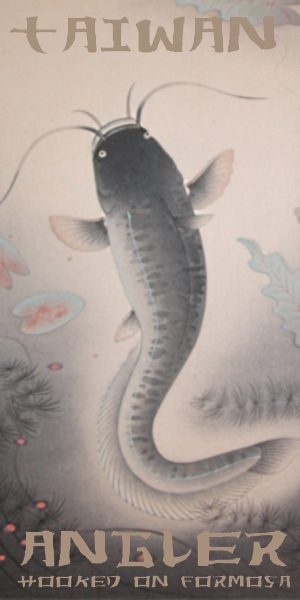Target Species: Striped Bonito
 Wednesday, July 27, 2011 at 3:42PM
Wednesday, July 27, 2011 at 3:42PM Family: Scombridae
Scientific name: Sarda orientalis
Common names: striped bonito, oriental bonito, Mexican bonito
Chinese names: 齒鰆 (chih chun), 东方狐鲣, (dōngfāng hú jiān)
Habitat: Bonito usually congregate in schools close to coastal areas, over reefs and near islands.
Size range: While they have been recorded up to 102 cm, specimens in the 50 cm range are much more common.
Fast, aggressive, compact and wily — everything about the striped bonito says “fun” for the light tackle saltwater angler. They are like the guest you hope shows up at a drab party who can dj, dance and tell hilarious jokes, all while mixing cocktails. In other words, they are always welcome. Striped Bonito (Photo by Chinese Academy of Fisheries Sciences)
Striped Bonito (Photo by Chinese Academy of Fisheries Sciences)
On a size scale, bonitos occupy a space between mackerels and tunas. Don’t let their compact size fool you; they pack a lot of punch in their little bodies. The striped bonito can be distinguished from its slightly larger cousins the Pacific (Sarda chiliensis lineolata) and Australian (Sarda australis) by the greater concentration of vertical stripes running head to tail down the upper portion of its body.
Bonito feed primarily a marine crustaceans, small fish and squid. Wherever one finds large schools of baitfish near the surface in Taiwan, the striped bonitos are usually not far off. They are found along every coastal area of Taiwan and the outlying islands.
A wide variety of tactics and tackle options are open to bonito anglers. Trolling spoons and feathered lures works well. In Taiwan, where trolling isn’t always an option for the average angler, still fishing from a boat or shore with metal jigs, stick lures, spoons and anything that imitates an injured baitfish should result in interest if bonito are in the vicinity.
Interest doesn’t always guarantee a hookup or even a strike, however. Aggressive hunters they may be, but striped bonito can be crafty as well, and get skittish once one of their fellow schoolmates is hooked. Individual fish will sometimes pursue, even bump a lure before breaking off the attack at the last second if something doesn’t look right. Low visibility leaders are recommended, and be prepared to change lure color, retrieve speed and depth to find what the bonito are responding to given the immediate conditions.
Of course, all their clever caution goes out the window when a school goes into a feeding frenzy, and then the fish will seem to strike at anything thrown their way. Once hooked, especially on a lighter rod, get ready for a an exciting little tussle.
As an eating fish, bonito sometimes don’t get the respect they are due, especially in western regions where some find them too strong tasting. Smoked or barbecued, they can be delicious. Better yet, try some bonito sashimi. If you prefer milder flavor, just cut away the darker red flesh.
 Chris Jackson |
Chris Jackson |  Post a Comment | | tagged
Post a Comment | | tagged  bonito,
bonito,  fishing in Taiwan,
fishing in Taiwan,  inshore fishing,
inshore fishing,  saltwater fishing,
saltwater fishing,  striped bonito,
striped bonito,  东方狐鲣,
东方狐鲣,  齒鰆 in
齒鰆 in  Saltwater Targets
Saltwater Targets 









Reader Comments